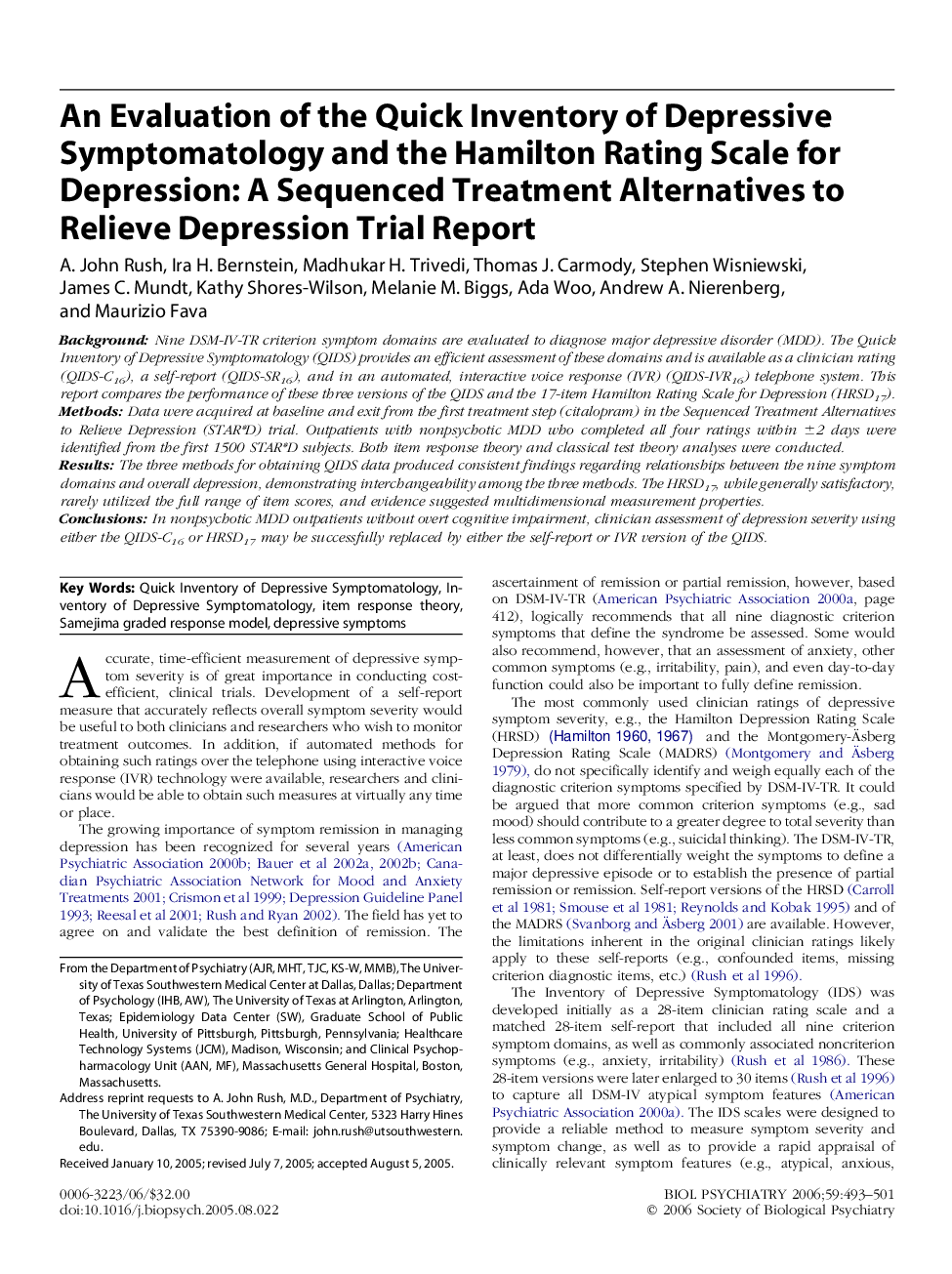| Article ID | Journal | Published Year | Pages | File Type |
|---|---|---|---|---|
| 4181338 | Biological Psychiatry | 2006 | 9 Pages |
BackgroundNine DSM-IV-TR criterion symptom domains are evaluated to diagnose major depressive disorder (MDD). The Quick Inventory of Depressive Symptomatology (QIDS) provides an efficient assessment of these domains and is available as a clinician rating (QIDS-C16), a self-report (QIDS-SR16), and in an automated, interactive voice response (IVR) (QIDS-IVR16) telephone system. This report compares the performance of these three versions of the QIDS and the 17-item Hamilton Rating Scale for Depression (HRSD17).MethodsData were acquired at baseline and exit from the first treatment step (citalopram) in the Sequenced Treatment Alternatives to Relieve Depression (STAR*D) trial. Outpatients with nonpsychotic MDD who completed all four ratings within ±2 days were identified from the first 1500 STAR*D subjects. Both item response theory and classical test theory analyses were conducted.ResultsThe three methods for obtaining QIDS data produced consistent findings regarding relationships between the nine symptom domains and overall depression, demonstrating interchangeability among the three methods. The HRSD17, while generally satisfactory, rarely utilized the full range of item scores, and evidence suggested multidimensional measurement properties.ConclusionsIn nonpsychotic MDD outpatients without overt cognitive impairment, clinician assessment of depression severity using either the QIDS-C16 or HRSD17 may be successfully replaced by either the self-report or IVR version of the QIDS.
